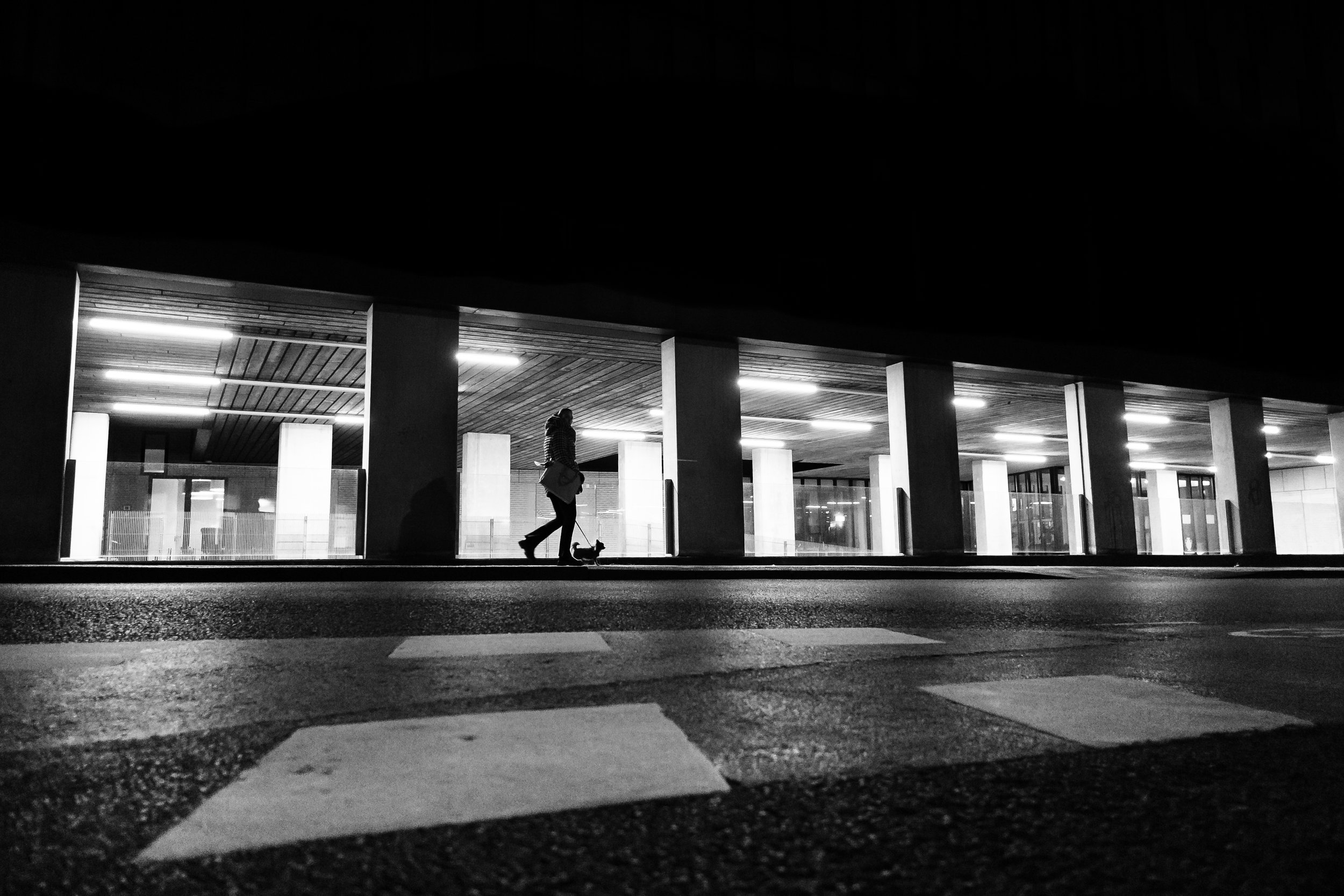50mm vs 24mm: What I Learned by Going Wider
For the longest time, I saw the world in a narrow frame. I mainly used two lenses on my Fujifilm camera: the XF 35mm f2 and the XF 27mm f2.8. On Fuji’s APS-C sensor, these translate roughly to a 50mm and 40mm full-frame equivalent. Both lenses gave me a natural, slightly compressed perspective that felt intuitive and familiar. They allowed me to focus in, isolate subjects, and create clean, composed images. And I loved that. Still do.
But over time, I started to notice the limitations. While I could zoom in on emotion or geometry, I often missed the bigger picture. Quite literally. My images told tight stories but not always the full story. And it wasn’t until I met street photographer Alan Schaller on the streets of London that I began to question the way I saw the world through a lens.
Meeting Alan Schaller and Seeing Wider
Alan is known for his wide-angle, black-and-white street work. When we crossed paths in London, he showed me how he used his 24mm lens with precision and speed. He zone focused, got in close, and captured raw, immediate moments that felt alive and unfiltered.
Watching him work, I realized something important. The focal lengths I had been using, equivalents of 40mm and 50mm, offered control and intimacy, but they also kept me at a distance from spontaneous moments. On busy streets, things happened too fast. Autofocus would miss. Composition would break. And I’d walk away with more regrets than keepers. Alan’s approach showed me a different way to work, faster, more reactive, and more open.
That meeting inspired me to explore a wider perspective in my own photography.
The Switch to 24mm
On Fujifilm, the XF 16mm f2.8 lens gives about a 24mm full-frame equivalent. It’s not an extreme wide-angle, but it feels like a completely different world compared to the tighter 50mm and 40mm equivalents I had been using before.
Since that shift, I haven’t stopped using my 35mm or 27mm lenses. They’re still valuable tools in my kit and I reach for them often, depending on the subject or mood I want to convey. But adding the 16mm changed the way I approach the street. It taught me to think in terms of space, energy and geometry. It opened up scenes I would have previously walked past.
Example of using the XF16mm f2.8 to create a dynamic composition with a strong visual point.
The Frame is Very Wide, but that’s the Challenge
With a 24mm equivalent, you can’t hide. Everything is in the frame: people, signs, wires, clutter. You either learn to work with the chaos or the photo falls apart. But when it works, when the lines connect, the subject fits, and the story unfolds, it’s powerful.
I learned to see differently. I stopped avoiding clutter and started composing with it. Everything became part of the scene. Every texture, every shadow, every angle.
Getting close gives control over the scene.
You Have to Get Close
There’s no zooming in from afar. If you want impact, you step into the moment. It’s intimidating at first, but also freeing. You’re no longer a bystander. You become part of the scene.
And the closer you get, the more the 24mm rewards you. Lines begin to bend. Angles exaggerate. Suddenly, a dull sidewalk turns into a dynamic composition, just because you moved a step forward. I often say this focal length is like a knife. The closer you get, the more effective it becomes.
Get a good frame and wait for the subject to walk into the scene.
It Makes Boring Scenes Work
One of the biggest surprises was how I could shoot in bad light or uninspiring places and still come home with something interesting. Before, I relied heavily on mood and light. If the sun wasn’t playing along, or if I found myself in a dull town, my images often fell flat.
But with the 24mm, I started paying attention to shapes, lines, contrast and space. Even on overcast days, I could create something strong because the geometry itself started doing the work. That taught me that good photography isn’t always about dramatic light. Sometimes, it’s about perspective and knowing how to use it.Final thoughts
Switching to a compact setup has completely changed the way I approach photography. It’s given me the flexibility and spontaneity that I needed, without the restrictions of heavy, attention-grabbing gear.
I could also think of many reasons why people use larger setups, like better zoom range, less lens swapping etc…
This is just my take and how my experience has been over the years and why I prefer compact over everything else.
A Versatile Tool Not a Replacement
The 16mm f2.8 isn’t my everyday go-to. I wouldn’t recommend it for casual snapshots or travel moments where you just want a clean, natural-looking frame. For that, the 35mm and 27mm lenses, giving the equivalent of 50mm and 40mm, still make more sense. They’re easier on the eyes and more forgiving when documenting day-to-day life.
But when I’m in the mood to explore, to challenge myself, or to really build an image from nothing, the 16mm is the lens I reach for. It brings energy, depth, and structure into my work that I couldn’t achieve before. It’s not about replacing one lens with another. It’s about expanding what’s possible.
Here below you can see some of my work with this focal length.
In the End A Shift in Perspective
Switching to 24mm didn’t just change my photos, it changed my process. It forced me to move differently, think differently, and look at scenes with new curiosity. It reminded me that photography is as much about how you see as it is about what you shoot.












